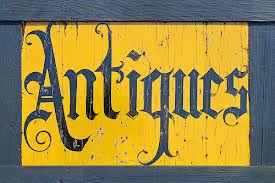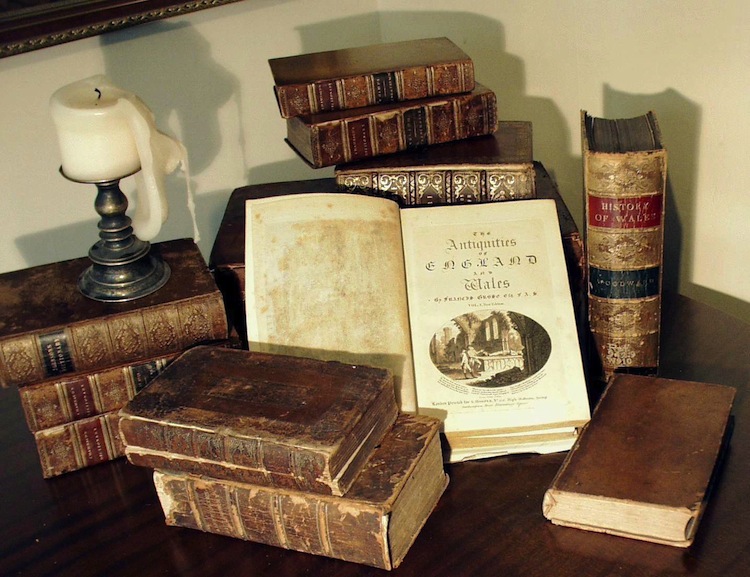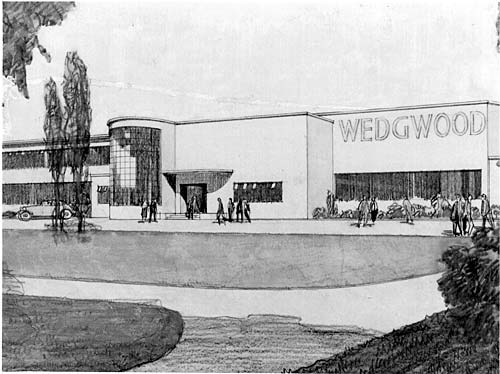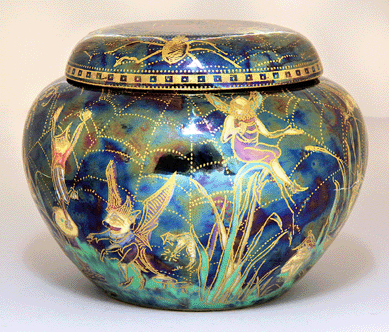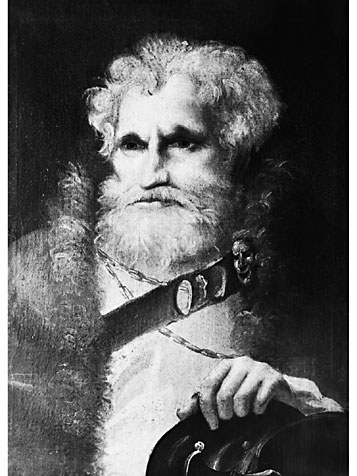ANTIQUES & COLLECTIBLES
Something for Everyone
It is a fact that there are almost as many types of buyers as there are likely to be lots for sale at an auction for antiques or collectibles. However, buyers can be broadly broken down into three distinctive segments: the private buyer, representatives of institutions and museums and, of course, commercial dealers. Each of these groups will buy for its own purposes and reasons so it is now worthwhile
looking at each of them briefly.
The Private Buyer
Depending on their age and economic status, private buyers may be anyone from a young married couple trying to furnish a house as cheaply as possible to a dedicated and highly knowledgeable collector in a particular esoteric field. While each of these may practice at widely different ends of the auction spectrum, they have both discovered the satisfaction of buying from a wide range of potential offerings, items that meet their needs at fair market prices.
Generally, private collectors are people who are indulging a hobby rather than a full-time commitment. For the private buyer who is collecting as a hobby, it is an exercise that requires a great deal of study and research. The collector gains satisfaction from the thrill of the chase and, over the passage of time, a collector who specialises in one area will gain an expertise similar to the dealer and the antique auction house cataloguer.
The broad variety of knowledge sought by the private collector has led many auction houses, particularly the larger ones, such as Sotheby’s, Phillips or Bonhams to make extensive efforts to educate their buyers in every field of collecting. Newsletters, preview magazines, lectures, symposia, seminars and published works all serve to help the private buyer enhance their expertise.
Also, salerooms at the larger and more prestigious auction houses offer a wide variety of client services to the private buyers. The buyer may consult any of these account executives free of charge and if they do not know the answer to the question, they will certainly know to whom the question should be addressed, thus acting as a conduit to more specialist staff in the back rooms of the auction house.
These agents will also assist the private buyer in executing bids, answering questions as to the condition of the item and consulting on any changes in the pre-sale estimates.
Taken as a broad group and recognising that each area produces wildly different statistics, private buyers generally account for well over 50% of all auction purchases. Many people who attend auctions may not be coming initially as buyers but rather as spectators using the auction room as a place to learn how to distinguish quality and value as well as an accurate indicator of the current state of any given market. All such people are welcome to attend an auction and with the exception of the most highly prestigious auctions, for example, no tickets or admission charges are levied.
Museums and Institutional Collectors
The institutional buyer, whether it is a museum, library, college or other cultural establishment serves several functions in the auction market. It may supply scholarly and academic expertise. Scholars frequently spend a lifetime concentrating on the work of one artist or one small group of artists. Such information is an invaluable asset to an auction house specialist and cataloguer.
Also the institution usually helps to identify quality in any particular area of collecting and when properly managed will only seek to acquire the rarest, best examples available in any given field. In this way, institutions lead the way in defining quality. Also, by acquiring the very best samples as they appear on the open market, a museum or institution withdraws them from circulation thereby increasing the demand and raising the value of those works that remain on the open market.
Dealers
Dealers have a strategic position as buyers in auction rooms. They survive on the basis of the accuracy of their judgements and generally have an extra-ordinary knowledge and range of experience. The auction rooms are, for them, a supply of marketable property that must be bought at a low enough price to pass on to a client and still make a reasonable profit. Clients must be willing to pay the premium involved because they are paying for a dealer’s knowledge, experience and also a warranty of authenticity.
At an auction, a dealer may be buying for one of a number of different purposes. The purchase may be for stock, where an item fits in with the gallery’s type of inventory and had been bought as a form of speculation where the dealer hopes to turn the item around for a profit as soon as possible, but has no immediate client in mind. The dealer may also be bidding at an auction sale as a direct agent for a private collector, either as a courtesy or for a predetermined fee. This has several advantages for the collector.
The collector’s anonymity is preserved, preventing the competition and other collectors from pushing him or her to pay a higher price. The dealer will also be able to offer a client advice as to the quality, condition, bidding levels and other factors relating to the potential purchase. The commissions paid for these services vary but usually range between 2% and 5%. At the very top end of the market it is not for unheard of for a dealer to bid on an important item totally free of charge.
The successful dealer in these circumstances may expect considerable free publicity and exposure, which can only accrue to the dealer’s benefit and reputation. Another advantage in commissioning a dealer to bid on behalf of a private collector is that the dealer is in effect eliminated from the competition with that client on a lot in which both parties may have an interest.
A smart collector would rather pay a small commission to a bidding agent than run the risk of battle with a professional in the auction arena and pushing the price up even further.
Dealers also have another very important role within the antiques or collectibles trade. It is estimated that during the good times over half of all sales in the antiques or collecting business take place within the trade – that is dealer to dealer. During the really good times when the market is expanding, deals such as these make financial sense. Dealers are desperate for new stock to sell to their clients and, of course, one of the most easily accessible sources of supply are the dealers.
During harder times, a similar logic operates. Moving stock on within the trade means that money is not tied up too long in unsold items and thus everyone is helped out with their cash flow.
The dealers’ network has been likened to a pyramid. At the top of the pyramid are the dealers who own large exclusive shops located mainly in London’s West End. Their stock is usually made up of a wide range of quality, traditional art and antiques, which are tastefully displayed with a series of expensively decorated, inter-connecting rooms. The value in anyone of these shops can run into millions of pounds at anyone time. Such dealers who occupy the top of the heap generally employ a large staff as well as the specialists in different areas such as furniture, ceramics, silverware, paintings, etc. These houses tend to have long standing connections with some of the wealthiest families and collectors in the country and overseas.
The next level below this is again largely London- based although there are other members dotted around the country in the more affluent towns and cities. These shops are generally located in the smarter areas of London such as Knightsbridge, Kensington and Chelsea. They are generally all members of the British Antique Dealers Association. Similarly, they are generally very knowledgeable in their chosen fields and specialise in particular areas such as Georgian furniture, English porcelain, 17th and 18th century silver and glassware. Much of their stock is obtained from leading London auction houses and in doing so they have a major influence in current price levels.
The third tier of dealers specialise in one area of interest and can be found trading from various outlets ranging from a stall in an exclusive antiques market to the back of a car, out of a suitcase or even at home via their telephone and fax machine. These people are experts in any given field and specialist dealers rely on their expertise and reputation to establish a national or international network of clients and fellow dealers.
The next level or fourth layer in this pyramid tends to be made up of a group of dealers who are in many ways as much in the business of selling interior design and decorating as they are in antiques and collectibles. They always have smart shops in good locations and the antiques on display are generally backed up by a wide range of soft furnishings, fabric and wallpaper samples.
The next level is made up of a network of private dealers. These range from people who operate on a part-time basis to people who operate solely from home. They are generally specialists in a specific area who buy to sell-on to their clients who will include top London dealers and overseas collectors.
This is becoming an increasingly attractive option as the business can be run on a by-appointment basis and has far lower overheads that one centred on a retail outlet. Similarly the advent of the fax machine and, more recently, the Internet has contributed to the development of this sector. As with any other form of dealing success, it does not come easy and is dependent on their expertise in their chosen subject, building a national and international reputation and good marketing skills.
Next in the pecking order comes a network made up of a sizeable group of “trade only” dealers and warehouse exporters. These generally tend to operate from the less well-heeled parts of town and buy and sell antiques and collectibles as if they were cans of beans or any other retail commodity. This group generally tends to work with very tight cash flows and buy their stock from auctions, street market, antique fairs, house sales and car boot sales.
They are perhaps the most professional dealers in the market place and will take every aspect of the purchase from the exhibition, the cost of transportation, the degree of restoration necessary and the ease of sale into account before making a bid. It is very rare to find one of them getting carried away at bidding during an auction. They will work out a price and stick to it rigidly.
Finally, getting down towards the bottom of the pile are dealers who own small shops selling a very wide range of antiques and collectibles of various quality as well as sometimes offering services such as picture framing or minor repairs and restorations as a sideline. Round about the same level, you will find regular open market stall holders. In London a typical example of this breed can be seen at the stalls in the Portobello Road or Bermondsey markets. Often these specialise in a particular field, perhaps in silver or even something as obscure as specialised kitchen ware.
Finally, at the very bottom of the pyramid are what is known in the trade as “runners”. With no premises or even a stall to sell from, other than the boot or roof rack of an old estate car, their overheads are mainly confined to petrol and other travel expenses. They will buy from auctions, other dealers, in fact from anyone or anywhere that is selling something cheap that can be sold on for a profit somewhere else.

